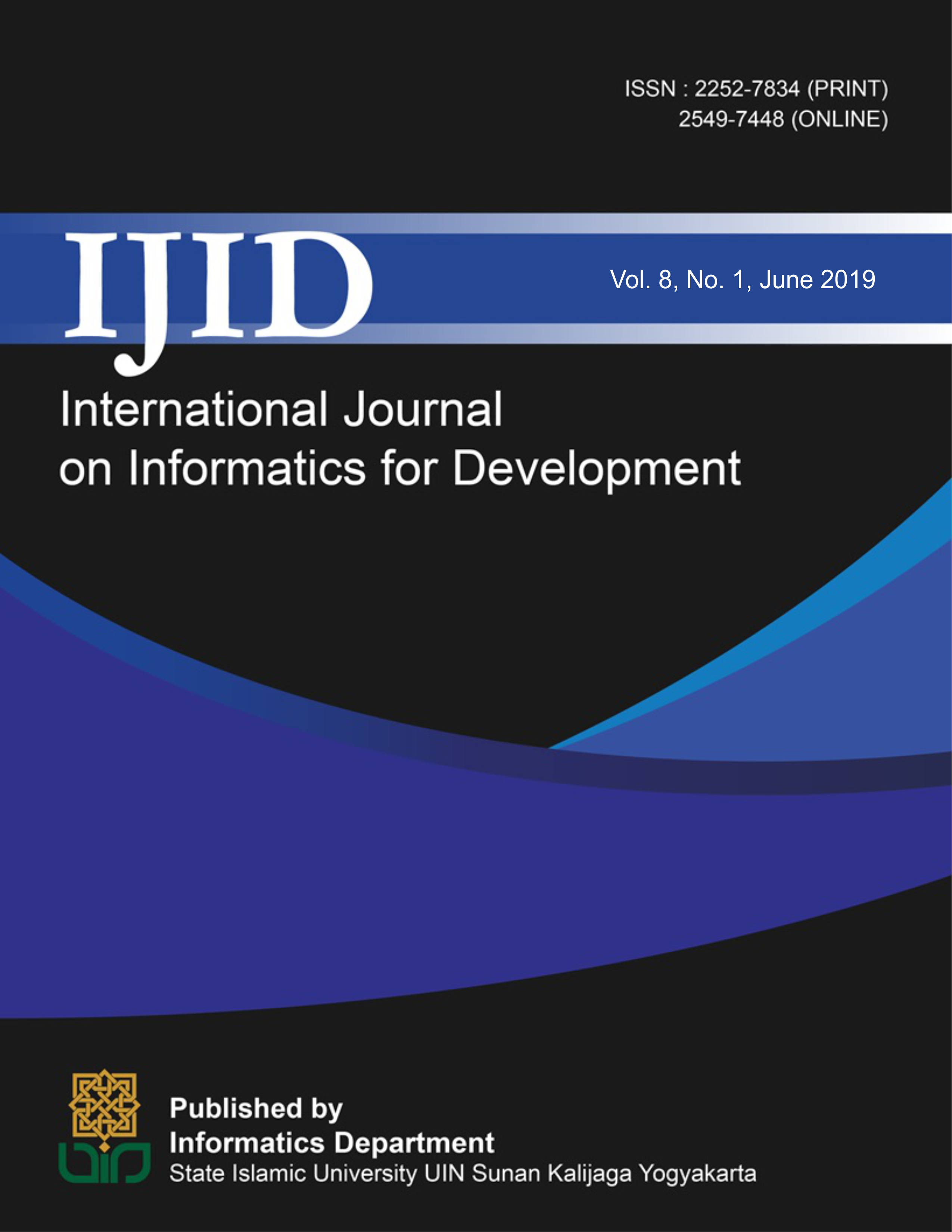Abstract
Indonesia has a disparity in internet access caused by differences in regional factors, especially in geographically difficult areas to reach. The disparity in internet access is narrowed by the existence of programs through USO funds. However, the researchers found that the equalization program for internet access using USO funds had not been effective, especially in the education sector. This paper aims to provide an evaluation of USO-funded programs. This paper uses qualitative descriptive methods with review literature data collection techniques accompanied by qualitative critical analysis techniques. The important finding of this study is that the internet access equalization program has not been effective as evidenced by the ineffectiveness of this program in the education sector. Researchers suggest optimizing the internet access equalization program through USO funds to improve the quality of education.References
http://nasional.kompas.com/read/2018/01/03/16514421/2018-jokowi-ingin-pemerintah-fokus-tingkatkan-sdm retrieved September 29, 2018
Kharisma, Bayu. 2013. Impact of School Operational Assistance (BOS) Program on School Dropouts in Indonesia: DID Analysis. http://journals.ums.ac.id/index.php/JEP/article/view/4942
Laksana, Ben KC. 2012. Education on fringe in Indonesia. https://www.newmandala.org/44323-2/
Kemdikbud. 2017. Ikhtisar Data Pendidikan dan kebudayaan 2017/2018. Pusat data dan statistik pendidikan dan kebudayaan Jakarta
Nikolic, et al. 2018. Appraisal and review of e-learning and ICT systems in teaching process. PhysicaA: Statistical Mechanics and Its Applications.
Tvenge, N., and Matinsen, K. 2016. Selection of ICT-tools for Manufacturing Education. Procedia 41 1096-1100
Umar and Hassan. 2015. Malaysian Teachers Levels of ICT Integration And Its Perceived Impact On Teaching and Learning. Procedia-Social and Behavioral Sciences 197
Scriven. 2000. Science in Elementary Education. New York : John Wiley and Sons Inc.
Rossi, P.H., Lipsey, M.W., Freeman, H.E. (2004) Evaluation: A Systematic Approach. 7th ed. Thousand Oaks: Sage Publications
Chen. 2004. Bring Character Education into Classroom. European Journal of Educattional Research Vol. 1, No. 2 (2012), pp: 163-170.
Gibson, M. 2008. Manajemen Sumber Daya Manusia. Cetakan ke dua. Jakarta: Erlangga.
https://www.uny.ac.id/berita/peran-tik-dalam-meningkatkan-kualitas-pembelajaran. retrieved October,1 2018
UNESCO “ITC in Education” May 16, 2011. Available at http://www.unesco.org/new/en/unesco/themes/icts/mission/
https://itstillworks.com/role-information-communication-technology-education-1419.html retrieved October 1, 2018
Siahaan, sudirnan (2010). Pemanfaatan teknologi informasi dan komunikasi dalam pembelajaran. Jakarta : Pustekkomdiknas
Goncalver, et al. Understanding individual-level digital divide: Evidence of an African. Computer in Human Behavior. 87 p. 276-291
Dewan, S., & Riggins, F. J. (2005). The digital divide: Current and future research directions. Journal of the Association for Information Systems, 6(12), 298–337.
Rondinelli, Dennis A., James S. McCullough, and Ronald W. Johnson. 1989. “Analyzing Decentralization Policies in Developing Countries: A Political-Economy Approach.” Development and Change 20, 1: 57-87
Dijk, Van. 2006. The Network Society. London: SAGE Publications
Ansell, Chris and Alison Gash. 2007. “Collaborative Governance in Theory and Practice”. Journal of Public Administration Research and Theory. 18(4). 543-571. https://sites.duke.edu/niou/files/2011/05/Ansell-and-Gash-Collaborative-Governance-in-Theory-and-Practice.pdf
Hogue, Teresa. 2003. Building Collaboration, Stronger Families Learning Exchange. Bulletin No. 3 p.6-8 diakses dari http://www.aifs.gov.au/sf/pubs/bull3/rm/html tanggal 7 oktober 2018
Kirk Emerson, Tina Nabatchi, Stephen Balogh. 2011. An Integrative Framework for Collaborative Governance. Jurnal of Public Administration Research and Theory. https://uncgcollaborativecapacity.wikispaces.com/file/view/J%20Public%20Adm%20Res%20Theory-2011-Emerson-jopart-mur011.pdf/264887156/J%20Public%20Adm%20Res%20Theory-2011-Emerson-jopart-mur011.pdf
http://marketeers.com/bakti-butuh-dana-uso-demi-pemerataan-akses-telekomunikasi/ retrieved maret 10, 2019
Thompson, Perry and Miller. 2007. Conceptualizing and Measuring Collaboration. Jurnal of Public Administration Research and Theory Advance Access published December 1, 2007 in Partnering with the Senior’s Sectors”. Local Government Sudies. 38 (2). 161-181.
Goldsmith, Stephen. And Eggers, William D. 2004. Governing by network. Brookings Institution Press.
https://www.kominfo.go.id/content/detail/13310/2018-bakti-targetkan-dana-uso-rp-27-triliun/0/sorotan_media retrieved october, 7 2018

IJID (International Journal on Informatics for Development) is licensed under a Creative Commons Attribution-NonCommercial-NoDerivatives 4.0 International License
